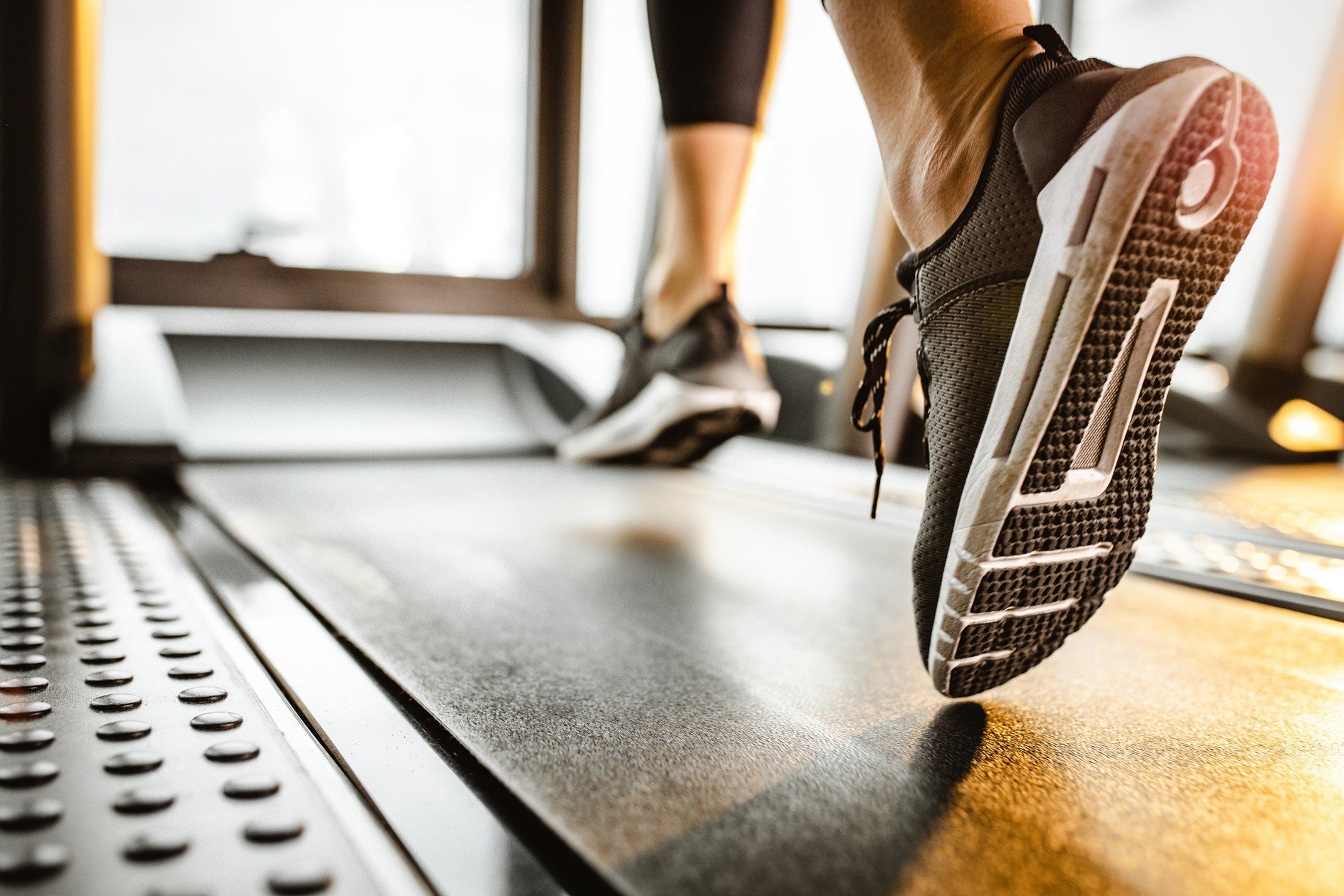


Exercise during pregnancy offers numerous benefits for both mother and baby. Regular physical activity can help improve mood, reduce stress and anxiety, increase energy levels, and prevent excessive weight gain. It can also reduce the risk of gestational diabetes, hypertension, and pre-eclampsia.
Here are some of the key benefits of exercise for pregnant women:
- Improved mood and reduced stress and anxiety: Exercise releases endorphins, the body’s natural mood boosters, which helps improve mood and reduce stress and anxiety during pregnancy.
- Increased energy levels: Regular exercise can increase energy levels and help fight fatigue, allowing you to better handle the physical and emotional demands of pregnancy (Youngstedt et al., 1997).
- Better sleep: Exercise can improve sleep quality, helping you fall asleep faster and stay asleep longer (Youngstedt et al., 1997).
- Improved cardiovascular health: Regular exercise can help improve cardiovascular health, reducing the risk of gestational diabetes, hypertension, and pre-eclampsia (Warburton et al., 2006).
- Healthy weight gain: Regular exercise can help regulate weight gain during pregnancy and reduce the risk of excessive weight gain, which can lead to complications during delivery (Kim et al., 2002).
- Better preparation for labor and delivery: Exercise can improve muscle strength, endurance, and flexibility, making it easier for you to handle the physical demands of labor and delivery (Netz et al., 2006).
- Improved postpartum recovery: Regular exercise during pregnancy can help improve postpartum recovery and reduce the risk of postpartum depression (Culos-Reed et al., 2005).
So, what can you do while you’re pregnant to exercise? Here are some activities that are safe and effective for pregnant women:
- Walking: Walking is a low-impact exercise that is safe for pregnant women at any stage of pregnancy. Aim for 30 minutes of moderate intensity walking most days of the week.
- Swimming: Swimming is a great form of exercise for pregnant women, as it helps to relieve pressure on the joints and provides a full-body workout.
- Prenatal yoga: Prenatal yoga is a gentle form of exercise that can help improve flexibility, balance, and muscle strength. It also promotes relaxation and stress relief.
- Pilates: Pilates is a low-impact form of exercise that can help improve core strength and stability, which is important for a healthy pregnancy and delivery.
- Resistance training: Resistance training with weights or exercise bands can help improve muscle strength and endurance and prepare your body for the physical demands of labor and delivery.
It is important to note that every pregnancy is different, and you should always consult with your doctor before starting an exercise program. Additionally, it is important to listen to your body and adjust your exercise routine as needed.
Benefits of Children’s Health from their Mom’s Exercise
When a woman is pregnant, she is not only nurturing her own body, but also that of her developing baby. The physical and emotional health of a pregnant woman can directly impact the health of her unborn child, according to research. Regular exercise during pregnancy has been linked to a range of benefits for both the mother and her developing baby, including improved birth outcomes, reduced risk of certain pregnancy complications, and improved health for both mother and baby postpartum.
One of the most significant benefits of exercise during pregnancy is improved birth outcomes for the baby. Regular exercise has been linked to reduced risk of preterm birth, lower rates of cesarean delivery, and shorter labor times.
In addition to these benefits, regular exercise during pregnancy has also been shown to have a positive impact on the developing fetus. Studies have linked regular exercise during pregnancy to improved fetal brain development, increased fetal heart rate variability, and reduced risk of fetal distress.
So, what happens to a child when their pregnant mother exercises regularly? Here are some of the key benefits:
Improved fetal brain development: Research has shown that regular exercise during pregnancy can have a positive impact on fetal brain development, including increased gray matter volume, improved cognitive function, and reduced risk of developmental disorders.
Increased fetal heart rate variability: Regular exercise during pregnancy has been linked to increased fetal heart rate variability, which is a measure of the baby’s ability to respond to stress and adapt to its environment.
Reduced risk of fetal distress: Regular exercise during pregnancy has been linked to reduced risk of fetal distress, which can occur when the fetus experiences a lack of oxygen or nutrients. This can lead to serious health complications for the baby, so reducing the risk is critical.
Improved birth outcomes: Regular exercise during pregnancy has been linked to improved birth outcomes, including reduced risk of preterm birth, lower rates of cesarean delivery, and shorter labor times. These outcomes can have a significant impact on the health and well-being of both the mother and her baby.
Overall, there is clear evidence that regular exercise during pregnancy has a range of benefits for both the mother and her developing baby. Whether you are trying to reduce your risk of pregnancy complications, improve birth outcomes, or simply maintain your health and well-being, regular exercise is a critical component of a healthy pregnancy.
Exercise during pregnancy offers numerous benefits for both mother and baby. Regular physical activity can help improve mood, reduce stress and anxiety, increase energy levels, and prevent excessive weight gain. It can also reduce the risk of gestational diabetes, hypertension, and pre-eclampsia. By incorporating safe and effective exercises, such as walking, swimming, prenatal yoga, Pilates, and resistance training, into your routine, you can help ensure a healthy pregnancy and a successful delivery.
References:
Youngstedt SD, O’Connor PJ, Dishman RK. (1997). The effects of exercise on mood state. Journal of Sports Medicine and Physical Fitness. 37(2): p. 262-269.
Warburton DE, Charlesworth S, Ivey A, Nettlefold L, Bredin SSD. (2006). Health benefits of physical activity: the evidence. Canadian Medical Association Journal. 174(6): p. 801-809.
Kim J, Strath SJ, Kim ES. (2002). Exercise during pregnancy: a review of patterns and determinants. American Journal of Preventive Medicine. 23(3): p. 224-230.
Netz Y, Lidor R, Bar-Eli M. (2006). The effect of pregnancy and exercise on physical fitness, body composition, and psychological well-being. Journal of Women’s Health Physical Therapy. 30(4): p. 17-24.
Culos-Reed SN, Kokko K, Cotton T. (2005). Exercise, self-esteem, and postpartum recovery. Journal of Women’s Health Physical Therapy. 29(4): p. 13-19.
Editor's Pick



Exercise during pregnancy offers numerous benefits for both mother and baby. Regular physical activity can help improve mood, reduce stress and anxiety, increase energy levels, and prevent excessive weight gain. It can also reduce the risk of gestational diabetes, hypertension, and pre-eclampsia.
Here are some of the key benefits of exercise for pregnant women:
- Improved mood and reduced stress and anxiety: Exercise releases endorphins, the body’s natural mood boosters, which helps improve mood and reduce stress and anxiety during pregnancy.
- Increased energy levels: Regular exercise can increase energy levels and help fight fatigue, allowing you to better handle the physical and emotional demands of pregnancy (Youngstedt et al., 1997).
- Better sleep: Exercise can improve sleep quality, helping you fall asleep faster and stay asleep longer (Youngstedt et al., 1997).
- Improved cardiovascular health: Regular exercise can help improve cardiovascular health, reducing the risk of gestational diabetes, hypertension, and pre-eclampsia (Warburton et al., 2006).
- Healthy weight gain: Regular exercise can help regulate weight gain during pregnancy and reduce the risk of excessive weight gain, which can lead to complications during delivery (Kim et al., 2002).
- Better preparation for labor and delivery: Exercise can improve muscle strength, endurance, and flexibility, making it easier for you to handle the physical demands of labor and delivery (Netz et al., 2006).
- Improved postpartum recovery: Regular exercise during pregnancy can help improve postpartum recovery and reduce the risk of postpartum depression (Culos-Reed et al., 2005).
So, what can you do while you’re pregnant to exercise? Here are some activities that are safe and effective for pregnant women:
- Walking: Walking is a low-impact exercise that is safe for pregnant women at any stage of pregnancy. Aim for 30 minutes of moderate intensity walking most days of the week.
- Swimming: Swimming is a great form of exercise for pregnant women, as it helps to relieve pressure on the joints and provides a full-body workout.
- Prenatal yoga: Prenatal yoga is a gentle form of exercise that can help improve flexibility, balance, and muscle strength. It also promotes relaxation and stress relief.
- Pilates: Pilates is a low-impact form of exercise that can help improve core strength and stability, which is important for a healthy pregnancy and delivery.
- Resistance training: Resistance training with weights or exercise bands can help improve muscle strength and endurance and prepare your body for the physical demands of labor and delivery.
It is important to note that every pregnancy is different, and you should always consult with your doctor before starting an exercise program. Additionally, it is important to listen to your body and adjust your exercise routine as needed.
Benefits of Children’s Health from their Mom’s Exercise
When a woman is pregnant, she is not only nurturing her own body, but also that of her developing baby. The physical and emotional health of a pregnant woman can directly impact the health of her unborn child, according to research. Regular exercise during pregnancy has been linked to a range of benefits for both the mother and her developing baby, including improved birth outcomes, reduced risk of certain pregnancy complications, and improved health for both mother and baby postpartum.
One of the most significant benefits of exercise during pregnancy is improved birth outcomes for the baby. Regular exercise has been linked to reduced risk of preterm birth, lower rates of cesarean delivery, and shorter labor times.
In addition to these benefits, regular exercise during pregnancy has also been shown to have a positive impact on the developing fetus. Studies have linked regular exercise during pregnancy to improved fetal brain development, increased fetal heart rate variability, and reduced risk of fetal distress.
So, what happens to a child when their pregnant mother exercises regularly? Here are some of the key benefits:
Improved fetal brain development: Research has shown that regular exercise during pregnancy can have a positive impact on fetal brain development, including increased gray matter volume, improved cognitive function, and reduced risk of developmental disorders.
Increased fetal heart rate variability: Regular exercise during pregnancy has been linked to increased fetal heart rate variability, which is a measure of the baby’s ability to respond to stress and adapt to its environment.
Reduced risk of fetal distress: Regular exercise during pregnancy has been linked to reduced risk of fetal distress, which can occur when the fetus experiences a lack of oxygen or nutrients. This can lead to serious health complications for the baby, so reducing the risk is critical.
Improved birth outcomes: Regular exercise during pregnancy has been linked to improved birth outcomes, including reduced risk of preterm birth, lower rates of cesarean delivery, and shorter labor times. These outcomes can have a significant impact on the health and well-being of both the mother and her baby.
Overall, there is clear evidence that regular exercise during pregnancy has a range of benefits for both the mother and her developing baby. Whether you are trying to reduce your risk of pregnancy complications, improve birth outcomes, or simply maintain your health and well-being, regular exercise is a critical component of a healthy pregnancy.
Exercise during pregnancy offers numerous benefits for both mother and baby. Regular physical activity can help improve mood, reduce stress and anxiety, increase energy levels, and prevent excessive weight gain. It can also reduce the risk of gestational diabetes, hypertension, and pre-eclampsia. By incorporating safe and effective exercises, such as walking, swimming, prenatal yoga, Pilates, and resistance training, into your routine, you can help ensure a healthy pregnancy and a successful delivery.
References:
Youngstedt SD, O’Connor PJ, Dishman RK. (1997). The effects of exercise on mood state. Journal of Sports Medicine and Physical Fitness. 37(2): p. 262-269.
Warburton DE, Charlesworth S, Ivey A, Nettlefold L, Bredin SSD. (2006). Health benefits of physical activity: the evidence. Canadian Medical Association Journal. 174(6): p. 801-809.
Kim J, Strath SJ, Kim ES. (2002). Exercise during pregnancy: a review of patterns and determinants. American Journal of Preventive Medicine. 23(3): p. 224-230.
Netz Y, Lidor R, Bar-Eli M. (2006). The effect of pregnancy and exercise on physical fitness, body composition, and psychological well-being. Journal of Women’s Health Physical Therapy. 30(4): p. 17-24.
Culos-Reed SN, Kokko K, Cotton T. (2005). Exercise, self-esteem, and postpartum recovery. Journal of Women’s Health Physical Therapy. 29(4): p. 13-19.








